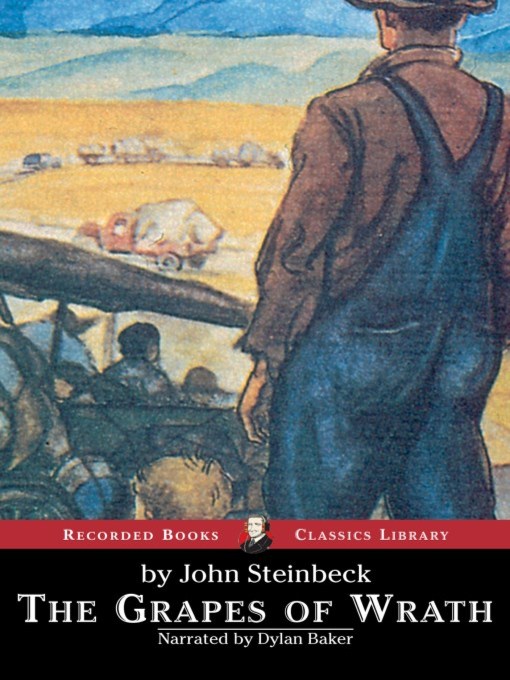The Grapes of Wrath by John Steinbeck, widely regarded as the most quintessentially American novel ever, is an evocative and heartbreaking story of poverty, industry, and resilience in the toughest of times.
The book centers around the Joad family, who, after the company that owned their land in Oklahoma repossessed it, are moving to California to find work. The group consists of Ma Joad, Pa Joad, Noah- the oldest son, Tom- the middle son, who was recently paroled from jail, and Al- the youngest son, who cares for nothing but cars and girls. They also have with them Granma and Granpa Joad, Ruthie and Winfield, the youngest siblings, and Rose of Sharon- their only (and pregnant) daughter with her husband Connie. As this ragtag group slowly makes its way across the country, and realizes that California may not be the ‘promised land,’ everything they know slowly falls apart- and only the love of community and family can save them.
Author Steinbeck uses simple and easily understandable prose to weave a beautiful and simultaneously sorrowful picture of life in California. Published in 1939, right on the heels of the private industrial complex boom, the novel carefully weaves together the individual story of the Joad family and the collective experience of the ‘migrant people’ to create a narrative that is heartbreaking in its universalness. Steinbeck writes about private companies and ‘big business’ with scathing contempt, contrasting their greed against the plight of the migrants from the Midwest, and in doing so, explores the sad and serene reality of human nature with a wistful, timeless voice.
-Vaidehi B.
The Grapes of Wrath by John Steinbeck is available for checkout at the Mission Viejo Library. The audiobook version can also be downloaded for free from Overdrive.








